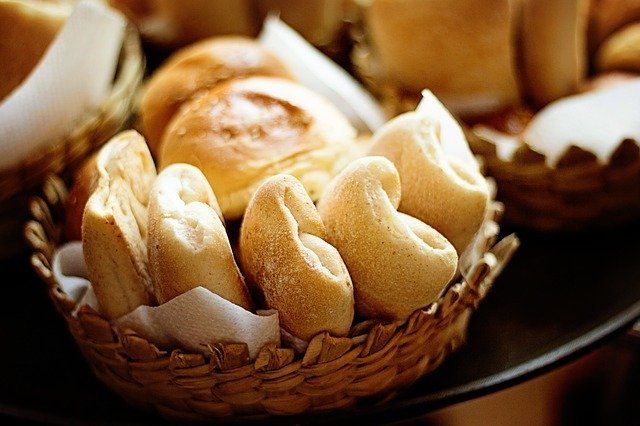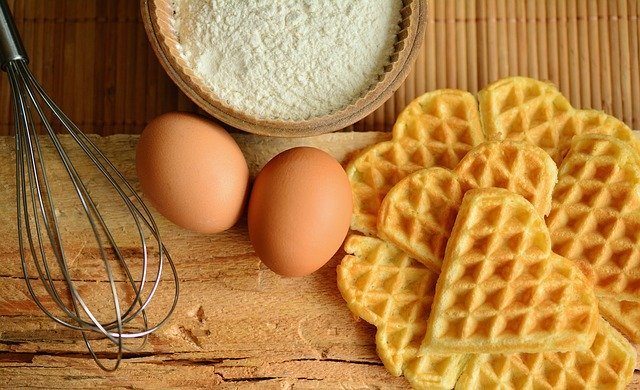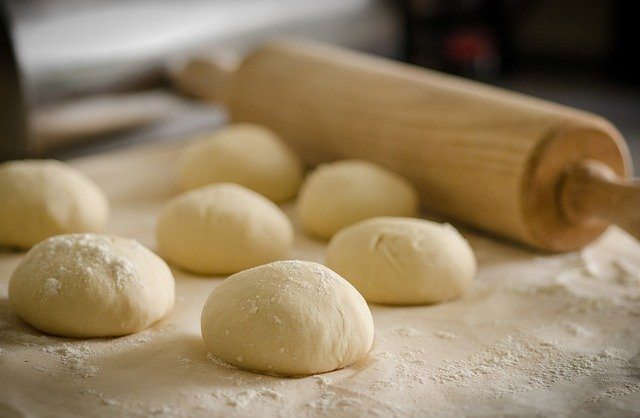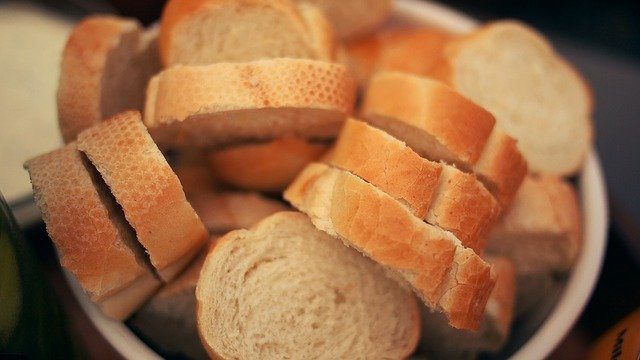Quick breads have always been a popular choice for bakers, both experienced and beginners alike.
They’re fun, fast, and easy to make. Serving as perfect recipes for when you don’t have much time on your hands, you can enjoy something to munch on in short order.
They’re also a great way to get acquainted with baking, before you delve into more complicated techniques, like yeast and soda baths. What is quick bread? It’s the casual baker’s best friend! If you don’t want to really commit to complex recipes, then quick breads allow you to dip your toes in the vast world of baking.
Ready to try it?
Whether you’re a beginner or well-versed, here is everything you need to know about quick breads – from leavening agents, to the different types, to how to make a quick bread yourself.
Let’s dive in!
History and Origins of Quick Bread
Before quick breads, this food type was always leavened with yeast or eggs.
However, with the advent of commercial baking soda, breads are much easier to make.
The Arm & Hammer brand was responsible for the introduction of baking soda in the United States; the popularity of chemical leavening continued with the introduction of commercial baking powder in 1856.
The development of chemical leavening agents would prove useful in the American Civil War. Food needed to be easy to prepare and portable, qualities that quick breads fulfilled. Additionally, there was a shortage of laborers who could create breads the traditional way, making quick breads the perfect option.
What Is Quick Bread?
Bakers often begin with quick breads, whether they know it or not.
They’re fast recipes to make, often requiring less than an hour of prep work.
But what is quick bread, exactly?
Quick breads are any type that do not require yeast or eggs.
Because of the lack of yeast, quick breads are much easier to prepare than other varieties of bread. They eliminate the need for rising times, as well as conditions that are needed to make yeast rise.
For this reason, quick breads are also called ‘fast bread.’
You can find dozens of cheap quick bread mixes on Amazon, in all kinds of flavors, which are great for small baking projects that even beginners and young kids will be able to follow successfully.
The Science of Quick Breads
If quick breads do not have yeast, then how do they rise at all?
Rather than using yeast or eggs for leavening, quick breads use chemical leavening, like baking soda and baking powder.
Similar to yeast, these leavening agents create carbon dioxide that cause a rise in the dough.
Baking Soda
Baking soda is a base compound; this means it will react with an acid and create carbon dioxide (which gives the rise to your dough). This acid can be any acidic ingredient: buttermilk, lemon juice, yogurt, and brown sugar are common acidic ingredients.
This chemical reaction first occurs when the base (baking soda) is introduced to an acidic ingredient, and then moistened. Sometimes, these two conditions occur simultaneously, as the acid is a liquid (like buttermilk or lemon juice.)
Otherwise, you will want to mix your acidic ingredient with other ingredients (as with brown sugar). This delays the reaction until the dough is heated in the oven; in the oven, an application of heat will speed up the creation of carbon dioxide.
You may notice that in some recipes, baking powder is used instead of baking soda. Baking powder is simply baking soda with cream of tartar. Cream of tartar is an acid; when using baking powder, you often don’t have to add an acid to your dough.

Other than leavening your bread, an acidic ingredient is necessary to neutralize baking soda. Without it, there will be a metallic taste in your dough.
Adding too much baking soda is a common beginner’s mistake; try to acquaint yourself with the different acid-base ratios in different recipes before formulating your own.
Baking Soda vs Yeast
Unlike yeast, baking soda’s chemical reaction occurs when introduced to moisture and heat. For this reason, the most common type of quick bread is made by mixing dry and wet ingredients separately; this delays the leavening reaction, so that there is still carbon dioxide (or a rise) in the dough before it is baked.
Likewise, this is also the reason why quick bread doughs cannot be prepared too early before baking; if you wait too long, the carbon dioxide created in the reaction would have already escaped into the air.
Yeast, on the other hand, has a much slower chemical reaction. This is because yeast reacts with the starch in the dough; starch is converted into sugar, creating carbon dioxide. This reaction can take hours, compared to the mere minutes that baking soda needs.
Quick Breads vs Normal Breads
The most obvious difference between quick breads and normal breads would be its texture. Because of the lack of yeast, quick breads have a more uniform texture, with fewer air bubbles in the dough. Quick breads also tend to be lighter in color, and much softer compared to yeasted breads.

Additionally, quick breads are much faster to make, as they do not require rising times. They are also more reliable, since they do not need the conditions (like temperature and humidity) that yeast does.
On the other hand, yeasted breads tend to be more nutritious and flavorful than quick breads. This is why artisan breads are almost always made using yeast; yeast can be time-consuming and hard to control, but the payoff is more nutritious, textured, and tasty breads.
Types of Quick Breads
Because “quick bread” can refer to a large variety of breads, it’s usually classified into different types. Quick breads can be categorized according to the way that it is mixed.
While often overlooked by newbie bakers, mixing is an important part of bread-making. The way you mix your dough will depend on the ingredients that you use and the texture that you want to achieve in your dough.
Let’s take a look at the different mixing methods, so you can decide which is best for your recipe.
Straight Mixing Method
Also known as the quick bread method, two bowl method, or stirring method, this option is the commonly used, especially for beginner recipes. It’s the easiest and most straightforward method of the four options described here.
It involves measuring and mixing the dry (like flour, baking powder, salt) and wet ingredients (like oil, eggs, or milk) of the recipe separately. The wet ingredients are then added to the dry ingredients, and mixed.

The consistency of the dough will depend on the amount of moisture in the recipe; it can be thin or thick. When using the straight mixing method, be sure to not over-mix; the more you mix, the denser your dough will be. (This can be useful for achieving a bread-like consistency, but over-mixing can still make your result too chewy.)
Some common quick bread examples of this type include loaves, muffins, and pancakes.
Creaming Method
The creaming method involves beating together butter and sugar until it creates a smooth and even consistency. Creaming allows air bubbles to be incorporated into the mixture, giving an aerated base for your dough. This aerated base will provide your quick bread with a fluffy, spongy texture. Other ingredients are then added, like eggs, which are also beaten to introduce air.
This is a more time-consuming method, but it dramatically affects the taste. Quick breads that are often created with this method are donuts, banana breads, and cookies.
Foaming Method
The foaming method is similar to the creaming method, only it uses eggs and sugar to create an aerated base. The foaming method can be done with whole eggs, but using just eggs whites (making a meringue) can create a fluffier base, since it’s easier to aerate egg whites than yolks.

The foaming method is created for all cakes that fall into the quick bread category. You can, of course, mix-match these methods for any recipe, depending on your time restraints and preferences, but the most classic results stick to their given categories.
Shortening Method
The shortening method involves cutting solid fat into flour and other dry ingredients. This solid fat is often butter, but it can also be in the form of lard or vegetable shortening. Manually cutting fat into dry ingredients can take a while.
For this reason, the shortening method is often the most time-consuming method of the ones discussed here. Bakers often use a food processor to mix the two together, although it can still be done by hand.

Once liquid is added to the mixture, the dough can then be shaped and cut. This creates a dough that is flaky, crumbly, and coarse.
Any type of baked good that does well with a flaky, crumbly texture can be made with this method, like scones and biscuits. Some types of breads, cakes, and pie doughs also use this method.
How to Make Quick Breads
Because the term “quick bread” can be extremely broad, there are many recipes that would fall under the “quick bread” category. At its core, however, it is made of the same ingredients: flour, fat, liquid, and a sweetener.
Flavor, of course, depends on the other ingredients that you add. Texture can be adjusted by changing the amount of liquid and acidity, as well as choosing the right mixing method.
Basic Quick Bread
Below is a basic quick bread recipe. While it may not be the most exciting, it’s the perfect foundation for any other type of quick bread. It’s also great for bakers to understand what goes into developing quick bread, from texture, to ingredients, to baking time.
As stated in a previous section, there are different ways to mix your ingredients when creating quick breads. In this recipe, we will be the straight mixing method. This is perfect for beginners, as it’s the most straightforward method.
Beyond that, this recipe comes in two variations: savory and sweet.

This is a base recipe, so feel free to add in your favorite ingredients. Each ingredient serves its own purpose in creating our quick breads. For beginners, or seasoned bakers who want to know more about the science behind each ingredient, check out this post here. It includes an explanation on the six basic ingredients that go into the making of any quick bread.
In addition, Baker Bettie also includes ingredient alternatives, like gluten-free and vegan alternatives.
Ingredients
Savory Variation
- 2 ¼ cups of all-purpose flour.
- 1 tablespoon of baking powder.
- ½ teaspoon of salt.
- 3 large eggs, room temperature.
- 1 ½ cups of milk, room temperature.
- 6 tablespoons of neutral oil.
Sweet Variation
- 2 ¼ cups of all-purpose flour.
- 1 tablespoon of baking powder.
- ¼ teaspoon of salt.
- 3 large eggs, room temperature.
- 1 ½ cups of milk.
- 6 tablespoons of neutral oil.
- 1 ½ cups of sugar.
- ½ tablespoons of vanilla.
Procedure
- Preheat your oven to 350 degrees Fahrenheit. Prepare a 9 x 5-inch loaf pan. Line with parchment paper or spray with non-stick spray. Set aside.
- In a large mixing bowl, whisk together wet ingredients. When creating the sweet variation, include the sugar (as sugar will absorb moisture from other ingredients).
- In different mixing bowl, sift the dry ingredients and mix together.
- Pour the wet ingredients into the dry ingredients. When mixing a sweeter variation, try not to over-work the dough. This will give it a more cake-like texture. Savory breads can be mixed further to develop a chewier, bread-like texture.
- For those who would like extra ingredients, cut up the ingredients into smaller pieces. Add them in at this point, and fold in gently so that they are just barely mixed into the dough.
- Pour the batter into the loaf pan. Bake at 350 degrees Fahrenheit for about 40 to 45 minutes, or until a toothpick comes out with moist crumbs.
Final Thoughts on Quick Breads
Quick breads are ideal for getting acquainted with baking.
They’re simple, fast, and easy to learn, so you can mix and match ingredients. They’re also a great go-to when you need something baked in the next hour, and don’t have time to spare.
Here are some great cheap quick bread mixes on Amazon. Choose one that appeals to you and you’ll be off baking up some tasty treats in no time at all.
Why not try baking one for yourself today?
